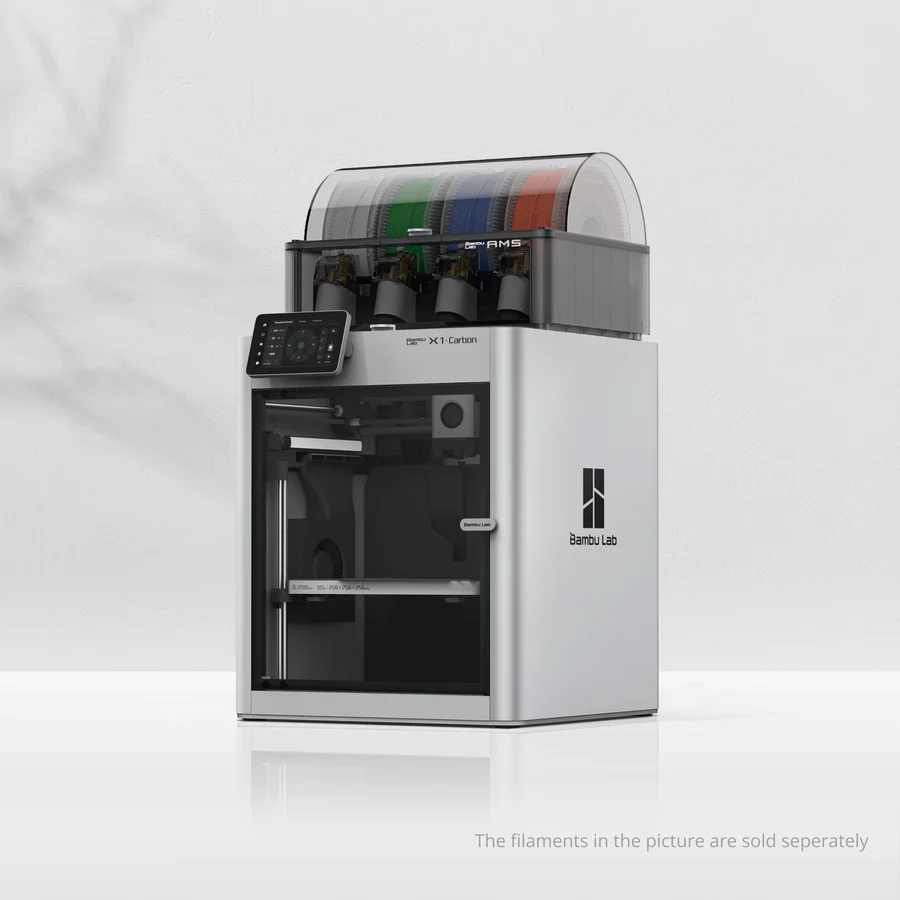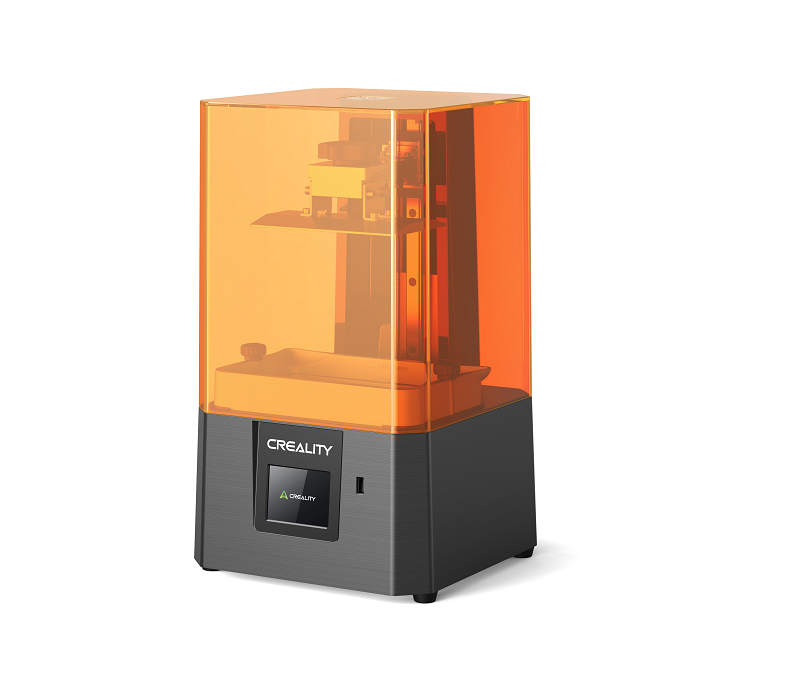Compare X1 carbon vs Halot R6
Comparison between the best 3D printers
Choose the best 3D printer at the best price. The cheapest 3D printers are here.
Buy a 3D printer here with 3D Fila.
 |
 |
|
| Model | X1 carbon |
Halot R6[BUY Halot R6] |
| Printing Material | Filament | Resin |
| Buy Filament for Bambu Lab X1 carbon | Buy Resin forCreality Halot R6 | |
| Estimated price | $1449,00 | $129,00 |
| Manufacturer | Bambu Lab | Creality |
| Release Year | 2023 | 2024 |
| Print Volume [mm] | 256x256x256 | 130x82x160 |
| Printer Size [mm] | 389x389x457 | 235x230x395 |
| Weight [kg] | 14,13 | 5,8 |
| Power Loss Recovery | YES | NO |
| Maximum Resolution [mm] | 0,1 | 0,01 |
| Processor | Quad ARM A7 1.2 GHz | |
| Display | Touchscreen 5'' | Touchscreen 2,8'' |
| Power Supply | 350 W | 42W |
| Connectivity | Wifi, Bambu bus, Cartão SD | USB drive, WiFi |
| Operating systems | Windows, Linux, Macbook | Windows, Mac |
| Date of registration in the system | 2024-04-10 | 2024-12-05 |
| Release date | 2023 | 2024 |
| Extra features | The Bambu Lab X1 Carbon revolutionizes 3D printing with stunning design, high print speeds, and a streamlined user experience. It stands out with its CoreXY system, a hotend capable of reaching 300°C, allowing for a wide range of filaments. Its LiDAR-assisted bed leveling system, vibration compensation, and AMS multicolor printing capability raise the industry standard. Print quality is impressive, with the ability to fine-tune for perfection. The X1 Carbon, with its closed build volume, not only promises but also delivers one of the most advanced 3D printing experiences available to consumers. | The Creality Halot R6 offers high precision with a layer height of 0.01-0.2 mm, a printing speed of 60 mm/h, and an integral light source with over 90% uniformity. Compact and lightweight, it features a 6.08" monochrome LCD for faster curing and extended durability. Includes Wi-Fi connectivity via Creality Cloud, an intuitive touchscreen interface, and supports remote monitoring and timelapse recording with a USB camera. Ideal for beginners, its robust and user-friendly. |
| Support for multiple colors and materials (AMS and CFS) | YES | NO |
Notes * |
||
| Cost-benefit | 7 / 10 | 9 / 10 |
| Hardware | 6.4 / 10 | 9 / 10 |
| Tela | . | . |
| Print volume | 4 / 10 | 3 / 10 |
| Performance | 4 / 10 | 9 / 10 |
| [BUY Halot R6] |
Conclusion |
| In comparing the Bambu Lab X1 Carbon and the Creality Halot R6, it's clear that each printer caters to different user preferences and needs, making them suitable for distinct segments of the 3D printing market. The Bambu Lab X1 Carbon stands out for its advanced features, such as high print speed, a robust print volume, and a well-engineered design that leverages a CoreXY system. Its capabilities for handling a wide range of filaments and colors, along with significant automation for bed leveling and print recovery, solidify its position as a premium offering for experienced users and professionals seeking top-notch performance. However, the higher price point reflects this advanced functionality and quality. On the other hand, the Creality Halot R6 excels in its affordability and user-friendly features, making it an ideal choice for beginners or hobbyists looking for a reliable and efficient printer without a significant financial investment. Its compact size and lightweight nature are additional advantages for those with limited space or who prioritize portability. Although it lacks some of the advanced features of the X1 Carbon, it still provides impressive resolution and ease of use, making it a compelling option for those new to 3D printing or interested in smaller-scale projects. Ultimately, the choice between these two printers should be dictated by the user’s budget and specific needs. For those who prioritize cutting-edge technology and are willing to invest in a more complex machine, the Bambu Lab X1 Carbon is unmatched. Conversely, for budget-conscious users or beginners, the Creality Halot R6 offers excellent value without compromising on quality, making it a wise choice for entry-level 3D printing. |

